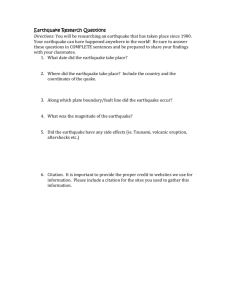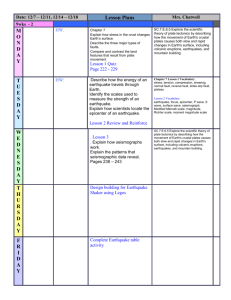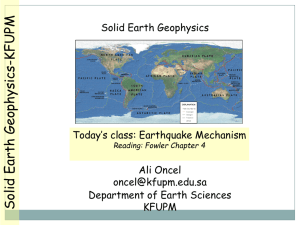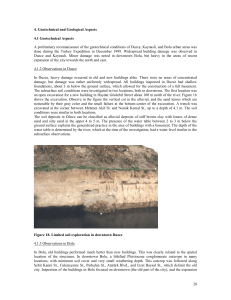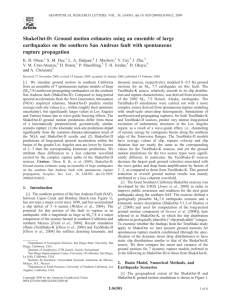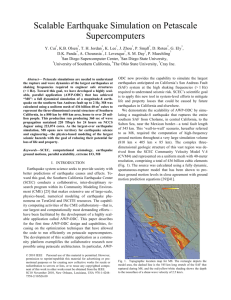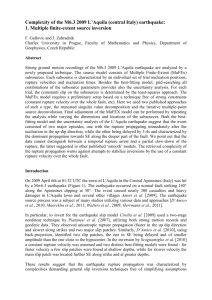http://www
advertisement
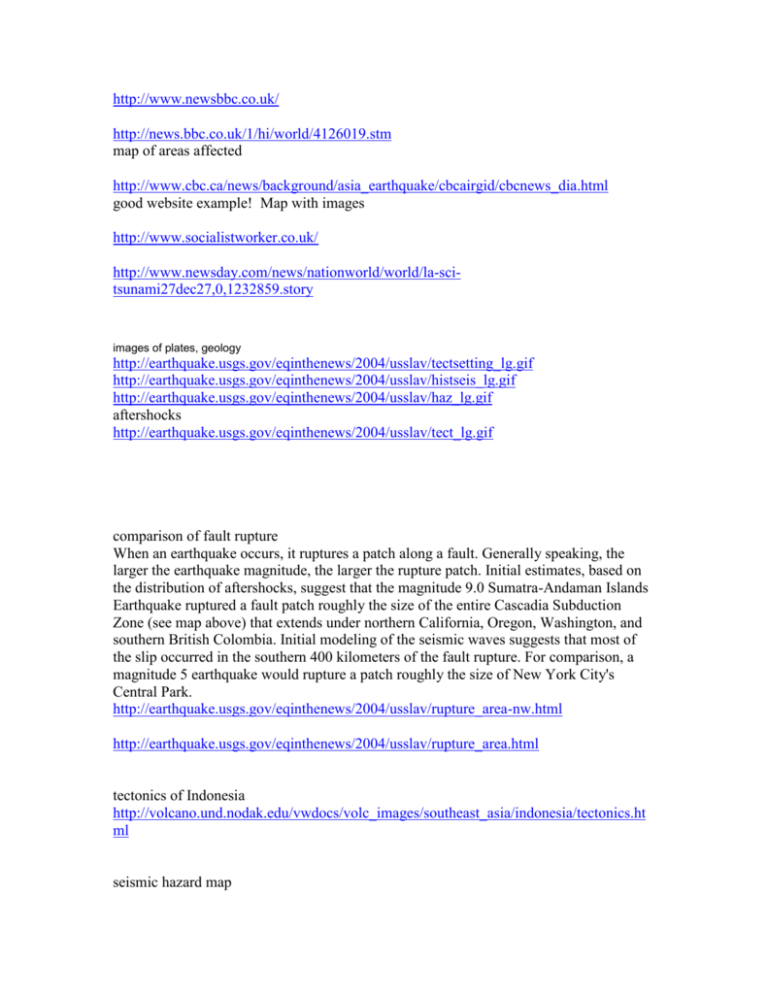
http://www.newsbbc.co.uk/ http://news.bbc.co.uk/1/hi/world/4126019.stm map of areas affected http://www.cbc.ca/news/background/asia_earthquake/cbcairgid/cbcnews_dia.html good website example! Map with images http://www.socialistworker.co.uk/ http://www.newsday.com/news/nationworld/world/la-scitsunami27dec27,0,1232859.story images of plates, geology http://earthquake.usgs.gov/eqinthenews/2004/usslav/tectsetting_lg.gif http://earthquake.usgs.gov/eqinthenews/2004/usslav/histseis_lg.gif http://earthquake.usgs.gov/eqinthenews/2004/usslav/haz_lg.gif aftershocks http://earthquake.usgs.gov/eqinthenews/2004/usslav/tect_lg.gif comparison of fault rupture When an earthquake occurs, it ruptures a patch along a fault. Generally speaking, the larger the earthquake magnitude, the larger the rupture patch. Initial estimates, based on the distribution of aftershocks, suggest that the magnitude 9.0 Sumatra-Andaman Islands Earthquake ruptured a fault patch roughly the size of the entire Cascadia Subduction Zone (see map above) that extends under northern California, Oregon, Washington, and southern British Colombia. Initial modeling of the seismic waves suggests that most of the slip occurred in the southern 400 kilometers of the fault rupture. For comparison, a magnitude 5 earthquake would rupture a patch roughly the size of New York City's Central Park. http://earthquake.usgs.gov/eqinthenews/2004/usslav/rupture_area-nw.html http://earthquake.usgs.gov/eqinthenews/2004/usslav/rupture_area.html tectonics of Indonesia http://volcano.und.nodak.edu/vwdocs/volc_images/southeast_asia/indonesia/tectonics.ht ml seismic hazard map http://neic.usgs.gov/neis/world/indonesia/gshap.html




